Can insects hold the key to safe feed?
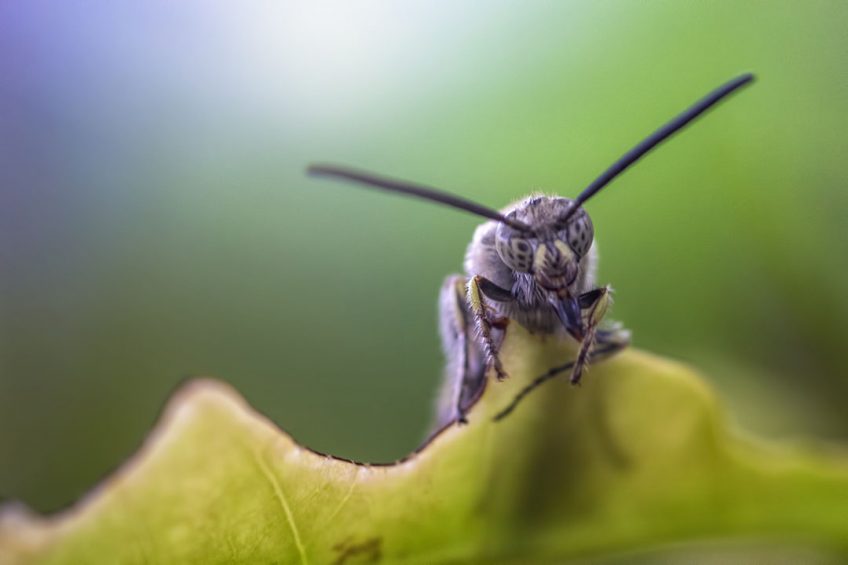
Research has shown that edible Insects can tolerate high amounts of mycotoxins. In this sense, do they offer a possible approach for grain ‘detoxification’?
Utilisation of insects for food and feed is a trend that has been growing for several years. This is due to many reasons. The world population and thus also the demand for animal based protein is growing and production of traditional livestock such as cattle, swine, poultry or fish will not be able to cover this need. Additionally, insect based protein is a more ecological alternative to beef, pork or poultry. Insects reproduce quickly, have a high feed conversion efficiency, a low environmental footprint, low water consumption and there is a possibility to rear them on waste substrates. Also, ethical reasons play a role as it is believed that insects do not feel pain as mammals or birds do.
Food neophobia
On the other hand, there is a so-called food neophobia. In many areas of the world where insects have not been part of the regular diet, the consumer acceptance of edible insects is low. Consequently, the insects are used in a highly processed manner in the food, i.e. so that it cannot be visually identified as a raw material. But still, in many high income countries, the consumer acceptance of insects used as food is low. Presently, the most attractive field of use for insects and insect based products is in the feed industry, e.g. as compound feed for poultry and in aquaculture. Insect protein could replace the use of fishmeal in the feeding of predatory fish, such as salmon.
Insects used in animal diets
There is a huge variety of insect species and their different developmental stages that could be utilised for food and feed purposes. On a European level, mainly larval stages of the mealworm beetle (yellow mealworm, Tenebrio molitor), litter beetle (lesser mealworm, Alphitobius diaperinus) or black soldier fly (Hermetia illucens) as well as the adult stage of some crickets (Acheta sp. and Gryllodes sp.) are intended or discussed for utilisation in feed production.
Novel analytical challenges
The fact that the price of feed is often determined by protein content has led to novel analytical challenges in feed production, trading and control. For example, the practice of measuring total protein for determining the value of a feed lot is hampered by the fact that chitin is present to large and varying amounts in low processed insect based products. Due to its nitrogen containing glucosamine backbone, chitin is a polymer that – depending on the method of analysis – may lead to too high apparent protein contents. Matrix adapted methods are required that e.g. distinguish between protease degradable ‘true’ protein and the apparent ‘total’ protein as obtained by Kjeldahl method. Moreover, the accurate verification of the insect species used in compound feed is crucial, as currently only a limited number of seven different insect species are allowed for livestock feeding in the EU.

Nourished on cereal side products
According to European law, producers of insects are responsible for ensuring the safety of their products like any other food or feed producer. Thus, it is prescribed that the substrates insects are reared on must only contain products of non-animal material (with some exceptions such as egg and dairy products) but must not contain slaughterhouse or rendering derived products, manure or catering waste. Also, insects imported into the EU must comply with these standards. In the case of insects that are intended for direct human consumption within the EU, food products will mostly fall under the Novel Food Regulation and therefore need authorisation before allowance on the European market. Thus, the hygiene and safety regulations of other (animal based) food also apply for insect based foods. In practice, insects are often nourished on cereal side products, which might contain high amounts of contaminants such as mycotoxins. Consequently, safety aspects of both, insect based feed and food, require careful consideration.
Tolerance for mycotoxins
Amongst others, the potential carry over of residues as well as the accumulation of environmental contaminants need to be comprehensively elucidated before insects and insect larvae can be considered as safe for food and feed production. It is known that insect larvae such as T. molitor or H. illucens can tolerate high amounts of e.g. mycotoxins in the feed. Some of the limited data that are available so far suggest that these larvae efficiently excrete a large portion of the ingested toxin with the faeces. However, for some toxins the overall recovery of the ingested amount is low. This finding implicates that part of the toxins are metabolised into derivatives of unknown identity by either the insects metabolism or by the microbiota colonising the intestinal system of the insect. One in vivo study is showing that the mycotoxin zearalenone (ZEN) does not accumulate in the larval body of lesser mealworm that seems to be able to metabolise ZEN and efficiently excrete the mycotoxin.
After feeding a diet containing up to 2,000 µg/kg ZEN spiked in whole grain flour for 8 weeks no negative effects on growth and survival rate were detected
Partial metabolising of ZEN into α-ZEL
Additionally, the study could confirm the partial metabolising of ZEN into its significantly more bioactive reductive derivative α-zearalenol (α-ZEL). As inter-species comparability between insects is difficult, in a further study the fate of ZEN in yellow mealworm also extending the analysis to sulphate conjugates as potential phase-2 metabolites was addressed. After feeding a diet containing up to 2,000 µg/kg ZEN spiked in whole grain flour for 8 weeks no negative effects on growth and survival rate were detected. This study led to the recovery of up to 80% of the initially ingested ZEN amount in the faeces after the experiment with 60% accounting for unchanged ZEN and the remaining 20% being present in the reduced α- or β-ZEL form. No ZEN or derivatives were detectable in the insects. Also, the formation of phase-2 metabolites could not be confirmed for ZEN in T. molitor.
ZEN should be negligible in insects
As the vast majority of ingested toxin is rapidly excreted, and having in mind the common application of an at least 24h fasting period of the insects before harvesting, it appears that ZEN as well as its metabolites should be negligible in the insects. Although neither ZEN nor its reductive metabolites are detectable in the yellow mealworm the intense formation of the more potent oestrogen α-ZEL that was confirmed by its presence in the faeces might impact on the organism. It should be investigated in how far oestrogenic substances could impair the pupation of the larvae and thus negatively influence the reproduction process of T. molitor to avoid negative effects on the stable reproduction capability when the insect is used for feed production.
Specifics of aflatoxin B1
Due to its toxicity, aflatoxin B1 (AFB1) is probably the most relevant mycotoxin worldwide. Unlike for ZEN, where previous studies could provide comprehensive data for the metabolic fate of the toxin and recoveries of 80% or higher of the toxin amount from the fed grains, for AFB1 it is common that 90% or more of the initial toxin amount cannot be recovered in the insect, faeces or residual feeding material. Similar to previous studies in A. diaperinus and H. illucens, our own experiment confirms the finding that insect larvae tolerate high AFB1 contents in cereals that were as high as 10,000 µg/kg grain flour fed in our study without pronounced negative effects on growth and survival rate for T. molitor.
Great uncertainties remain
Although considering several AFB1 metabolites known from literature, only aflatoxin M1 could be confirmed and quantified in low amounts in the analysis. In the larvae, AFB1 itself was also detectable to low amounts. Moreover, the total recovery of AFB1 from the administered feed in larvae, faeces and residual feed was only between 10% and 15%. This result is in line with previous data for H. illucens larvae and also confirms that great uncertainties remain. It cannot be stated that the biggest part of AFB1 is really detoxified as it is also possible that a reversible binding to the insect matrix might have taken place. In such a case a deliberation of the toxin itself or still toxic intermediates after uptake of contaminated insect products might occur.
In addition to the biological value of insect protein and ecological benefits, certain insects might be capable of ‘detoxifying’ grain lots with AFB1 contents that would be extremely harmful to humans and livestock
A role to play in food safety
The tolerance and efficient excretion of mycotoxins by insects might add a further aspect to the debate on pros and cons of insect use in food and feed. In addition to the biological value of insect protein and ecological benefits, certain insects might be capable of ‘detoxifying’ grain lots with AFB1 contents that would be extremely harmful to humans and livestock. In low and middle income countries the problem of managing mycotoxin containing crops is critical. Feeding insects as a new approach to retain mycotoxin contaminated food and feed resources in the food production chain could help to enhance food security. However, such consideration still requires additional evaluation of the presence of transformation products of AFB1 in the insect. Whether or not AFB1 from the grain is irreversibly detoxified is therefore a matter of current research.
 Beheer
Beheer

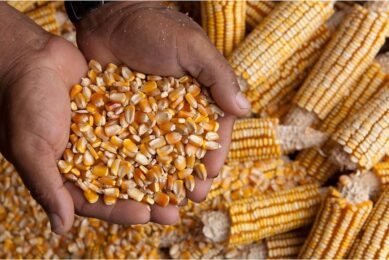
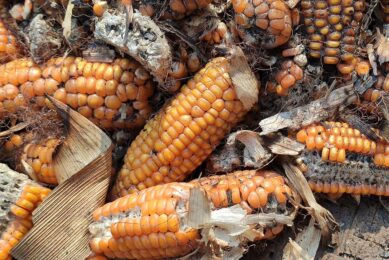
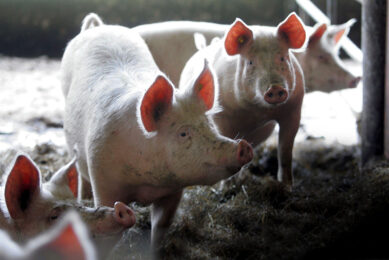
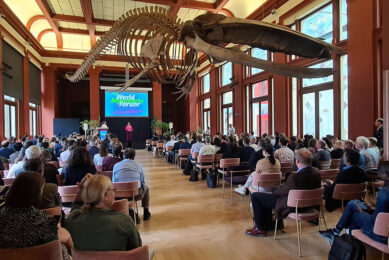
 WP Admin
WP Admin  Bewerk bericht
Bewerk bericht